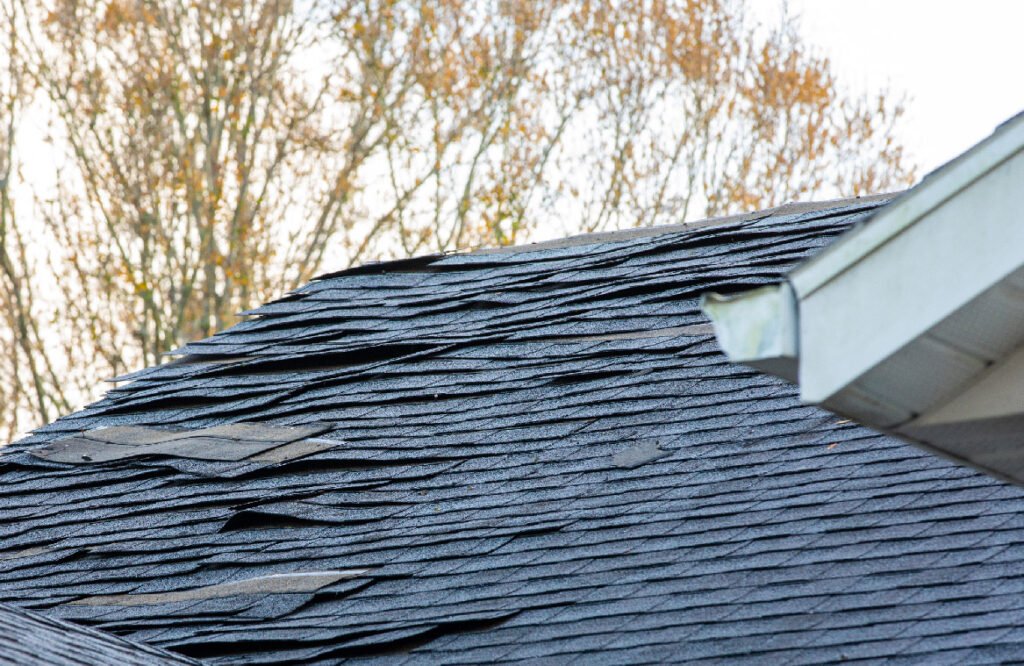A damage roof can be a nightmare for your home, allowing water leaks, mold growth, and structural damage if left unchecked. Whether caused by severe storms, hail damage, fallen tree limbs, or improper installation, roof damage needs to be addressed immediately to prevent further issues.
While a professional roofer is the best option for permanent fixes to storm damage, homeowners can take temporary measures to protect their homes until help arrives.
Inspect the Damage Roof
Before you cover a damaged roof, inspect it first. Use a ladder to safely reach the roof and look for visible damage, such as missing or loose shingles, torn roofing material, or holes near skylights, vents, and chimneys. Also, check for water stains in the attic and ceilings; these are signs of a leaking roof. If your roof was damaged by storms, high winds, hail, or clogged gutters, you need to act fast to avoid bigger problems.
Safety Precautions Before Covering the Roof
Roof repair is dangerous, especially after a big storm. Always prioritize safety by doing these:
- Don’t climb the roof during severe storms or bad weather.
- Use a sturdy ladder and have someone nearby to assist.
- Wear non-slip shoes and use a safety harness if necessary.
If the damage is extensive, call a top contractor or roofing contractor instead of doing it yourself.
Using a Tarp to Cover Roof Damage
One of the simplest and most effective ways to temporarily cover roof leaks and damage is by using a heavy-duty tarp. This will protect your home from rain and moisture until a roofing company can do a full replacement or proper repair. Follow these steps:
1. Measure the Damaged Area
Measure the size of the damaged area and cut a tarp big enough to cover it. Make sure each side has at least a 4-foot overhang.
2. Secure the Tarp
Use 2×4 wooden boards to anchor the tarp. Place the tarp over the water damage, and nail the boards into the roof sheathing to hold it in place.
3. Seal the Edges
To prevent wind damage and moisture buildup, staple or nail down the edges of the rain tarp for extra security.
4. Check for Leaks
Once secured, check the covered area for water leaks or signs of water damage.
Covering Small Roof Leaks with Roofing Cement
For small leaks, roofing cement can be a quick fix. Apply it directly to cracks, holes or missing shingles to prevent water from getting in. This is a temporary solution for small roof leaks and will help you save money until a permanent roof replacement is arranged.
Replacing Missing Shingles
If a few shingles get blown off due to high winds or severe weather, replacing them temporarily can prevent further damage. Here’s how:
1. Remove Loose Shingles
Carefully lift the edges of the surrounding shingles and pull out the damaged ones.
2. Apply Roofing Cement
Spread roofing cement under the edges of the new shingles.
3. Nail Down the Shingles
Secure the replacement shingles with roofing nails and seal them with roofing cement.
This is a short-term fix until the professionals determine if a full replacement is needed.
Clearing Gutters and Downspouts
Clogged windows and gutters can contribute to roof leaks by preventing proper drainage and allowing water to back up under the shingles. Regularly cleaning gutters and downspouts is a simple way to protect your roof. Removing debris, leaves, and dirt will prevent moisture buildup and further roof damage.
Roof Damage Near Skylights and Chimneys
Leaks around skylights, vents, and chimneys usually indicate damaged flashing. While a roofer should handle flashing repairs, homeowners can temporarily seal small gaps with waterproof tape or caulking. This will prevent water leaks and minimize structural damage.
Filing an Insurance Claim for Roof Damage
If your home gets damaged by a big storm, hail, or fallen tree limbs, your homeowners insurance may cover the repairs. Contact your homeowners insurance company immediately to start the claims process. Here’s what to do:
1. Document the Damage
Take clear photos of the damaged roof, including missing shingles, visible leaks and water stains inside your home.
2. Call Your Insurance Provider
report the damage and provide the necessary insurance documents.
3. Schedule an Inspection
Your insurance company may send an adjuster to assess the damage and determine your coverage.
4. Hire a Licensed Roofing Contractor
Many roofing companies work with insurance providers to have the insurance company facilitate repairs or replacement.
When to Call a Roofer
While temporary fixes can help in an emergency, they are not a long-term solution. If your roof is badly damaged or continues to leak even after your temporary fix, call a roofer now. A professional inspection will determine if repairs or a new roof is needed.
Protecting Your Home from Future Roof Damage
Preventive measures can help homeowners avoid frequent repairs. Regular inspections, proper maintenance and ensuring shingles are installed correctly will extend the life of your roof. Using high-quality materials and reinforcing areas prone to leaks will help minimize the effects of severe weather.
At Ever Gold Roofing Group, we specialize in roof repairs, replacements, and emergency services. If your roof has been damaged by a storm, wind, or hail, we can help. Call us today for a free estimate and to protect your home from further damage.

